Rules Roundup
Of the many thousands of Wargame rules out there it is difficult to decide which ones to spend your hard earned cash on. Here I simply lay out a brief overview of those I have explored or I am still testing out.
Ronin
Skirmish warfare in the age of the Samurai, where you are allowed to flash your katana
Introduction
Designed by Craig Woodfield and published by Osprey Publishing, Ronin places players in the midst of feudal Japan, where small warbands of Samurai, Ashigaru, and other warriors engage in cut-and-thrust duels. Ronin focuses on the detailed interactions of individual characters, providing a narrative-rich game.
Activation and Initiative
At the core of Ronin's mechanics is the concept of activation and initiative. Each turn, players draw action dice from a shared pool, determining the order of activation for their factions. The numbers on the dice dictate the sequence in which warbands or individual models come into play, offering a dynamic and unpredictable gameplay experience.
Action Dice and Ki Tokens
Ronin introduces the use of action dice, which serve multiple purposes. They not only decide activation order but also represent a model's readiness. Players can use these action dice to perform various actions, adding a layer of strategic decision-making. Additionally, Ki tokens, earned through successful actions, provide opportunities for extra movement or re-rolls, enhancing player agency.
Character Profiles
In Ronin, each model possesses a detailed character profile, featuring attributes like melee, shooting, skill, and armour. These attributes influence a model's effectiveness in different aspects of the game, including combat and special actions. The richness of character profiles contributes to the immersive storytelling aspect of the game.
Command Points and Leadership
To add another dimension to gameplay, Ronin introduces Command Points (CP). Generated by leaders or other characters, CP can be spent strategically to influence dice rolls, issue orders, or execute special actions. Leadership becomes crucial in the game, affecting morale and providing tactical advantages.
Activation and Orders
Unlike traditional turn-based systems, Ronin allows models to activate individually, fostering dynamic and reactive gameplay. Leaders play a pivotal role in issuing orders, influencing morale, and adding strategic depth to decision-making.
Morale and honor
The concept of morale is integral to Ronin. When a model or group takes casualties, a morale test may be required. Characters with high honour positively influence morale tests, while those with low honour may have adverse effects.
Engagement and Combat
Melee and ranged combat involve opposed dice rolls, with success determined by the attacker's and defender's attributes. The armour value of the target mitigates damage, simulating the effectiveness of Japanese armour.
Special Actions and Scenarios
Ronin introduces critical hits and special actions that add variety to combat. The game often utilises scenario-driven gameplay, offering specific objectives and victory conditions for each battle. This narrative approach encourages players to focus on achieving other goals beyond the mere elimination of the opposing force.
Campaign System
For those seeking a continuous narrative, Ronin includes a campaign system. Characters can gain experience, improve their abilities, and develop unique storylines over multiple games. The campaign system adds a layer of progression and personalisation to the overall game.
Conclusion
Digging into Ronin's wargame rules shows a detailed system reflecting feudal Japanese warfare. It includes character profiles and a dynamic activation system, offering a unique experience for wargame fans. Ronin stands out for both storytelling and strategy.

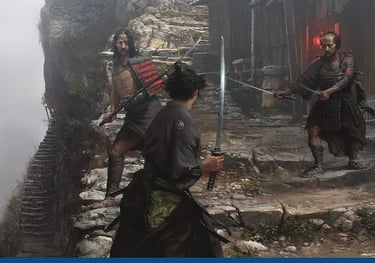
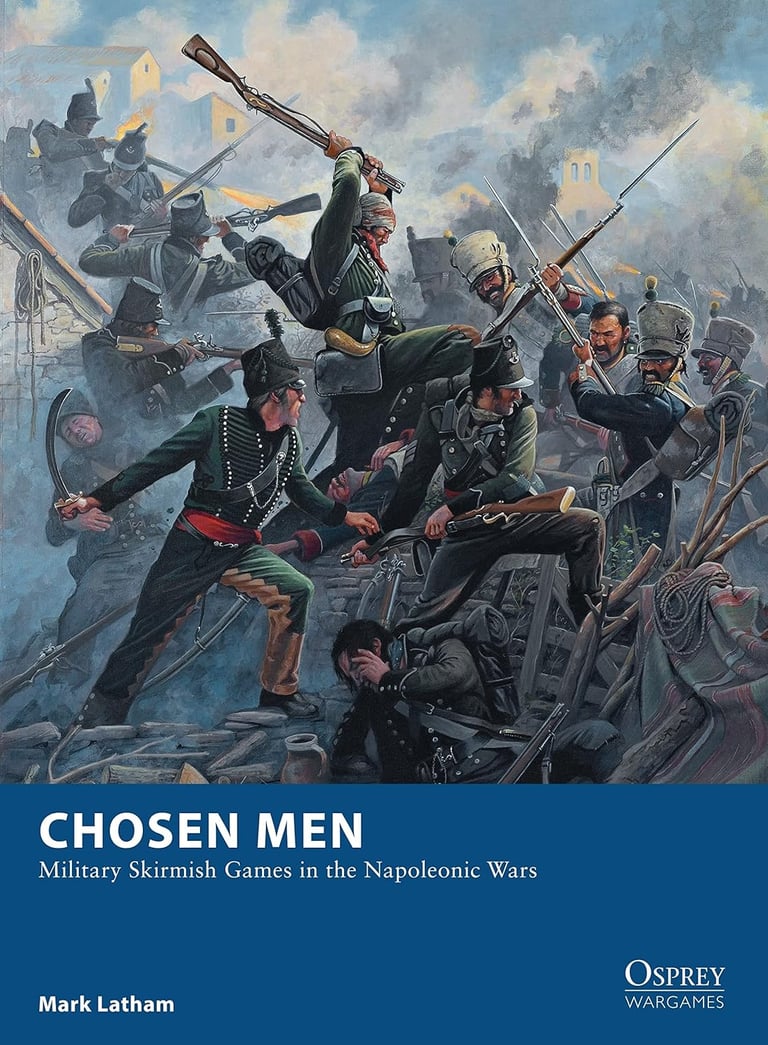



Chosen Men
Skirmish warfare in the age of Sharpe and Gerard, rascally Napoleonic adventures
Chosen Men, a Napoleonic-era wargame, has carved a niche in the tabletop gaming world. Developed by Osprey Publishing, it promises a realistic and immersive experience of skirmishes during this historical period. Having spent some time navigating the rulebook, here's my take on the game.
Chosen Men unfolds as a captivating Napoleonic-era skirmish game set amid the Peninsular War, entrusting players with the command of roughly thirty models assembled in regiments ranging from five to twenty soldiers. The game's design is a symphony of classical Warhammer Fantasy Battles mechanics, akin to orchestrating a Napoleonic Patrol within the expansive Warhammer universe.
A Familiar Dance with Warhammer Legacy
For those well-versed in Games Workshop's legacy, Chosen Men offers a sense of familiarity. The game incorporates elements such as the To Hit-To Wound resolution sequence, Random Charge, Saves, and other classic Warhammer rules. However, Chosen Men modernises these mechanics, introducing features like alternate activation, intricate command and control mechanics, and a departure from the hero-centric focus in favor of commanding officers.
Maneuverability is key
Chosen Men distinguishes itself from traditional Napoleonic wargames by prioritising maneuverability over sheer numerical strength. Rather than commanding vast regiments, players navigate the battlefield with small units that can seamlessly switch formations. The game's pace remains agile, allowing for strategic choices without succumbing to the mathematical complexities found in other systems.
Navigating the Mechanics
In the firing mechanics, Chosen Men adopts the classic Warhammer hit/wound/save sequence, prompting debates about its modern applicability. Musketry and small arms fire become integral components, with each unit possessing a shooting stat influencing the outcome of ranged combat.
Artillery Fire feature
A standout feature is the nicely crafted rules for artillery fire. Weapons boast minimum ranges and accuracy dice, and players decide the number of dice to roll. The ensuing calculations determine shot distance, with hits impacting units in their line of sight. A bounce mechanic introduces an element of unpredictability, creating a captivating and flavorful artillery experience.
Depth and Unit Design
Chosen Men introduces nuanced elements like reactions, Hold orders, and Independent Characters, offering strategic depth into the game. The design choices around abstracting certain aspects, particularly in melee combat, spark thoughtful reflections on whether the game leans more toward a focus on units or individual models.
Army Lists and Historical Flavor
Players can delve into limited army lists, unit upgrades, and special rules, providing a glimpse into the historical flavor of Napoleonic units in battle. The inclusion of points systems aids newcomers in army selection, offering guidance without overwhelming complexity.
Conclusion
Chosen Men unfolds as a captivating journey through Napoleonic skirmish warfare, blending classic Warhammer mechanics with modernized features. As you navigate the intricacies of firing, manoeuvring, and strategic choices, the game beckons both seasoned tacticians and newcomers to a tabletop experience infused with historical richness and dynamic gameplay.
Some challenges are the lack of comprehensive support from the author and Osprey. Quick Reference Sheets, and Errata/FAQ are noticeably absent. The author's decision to relinquish the work to Osprey implies a dearth of additional content or DIY resources.
Donnybrook
Skirmish warfare in the age of the Three Kingdoms, where kilts and catastrophe abound
Epochal Authenticity
Donnybrook, a wargame ruleset crafted by Clarence Harrison and Barry Hilton and published by Wordtwister Publishing, focuses on historical skirmishing; the ruleset transports players to the Renaissance, 17th century, and early 18th century. At the time of writing, I am not sure if there is a hard copy of the rules, but my own copy is a PDF I have on my iPad. You can get a copy by clicking here.
Dice and more Dice
Donnybrook will require you to make a small investment in dice. D6, D12s, D10s, D8s, and D4s. You will have to make some simple cards for each group of figures and each character in the game. It was actually quite fun making my own. Once acquired, you are off.
Diverse and Dynamic Units
The ruleset's flexibility shines through in its handling of unit composition, allowing players to field an array of historically accurate troops, different factions., bandits, cults, civilian mobs, highlanders, the army, and any historical groups you can think of. So, from disciplined musketeers to irregulars and tribal warriors, the rules' adaptability encourages creativity and facilitates the recreation of diverse historical scenarios.
Narrative Immersion
Donnybrook prioritises storytelling, offering a narrative-driven gaming experience. The innovative activation system, driven by event cards, introduces an element of unpredictability, ensuring that each game unfolds differently. This emphasis on storytelling enhances replayability as players become engrossed in the unfolding drama on the tabletop.
Modular Campaigns
The modularity of Donnybrook extends beyond individual scenarios, providing a robust framework for crafting dynamic campaigns. Game masters can easily adapt the rules to different historical settings or tailor them to suit specific preferences, fostering endless possibilities for players and ensuring each session feels uniquely captivating.
Engaging Melee Dynamics
Donnybrook's melee combat system is a standout feature, successfully capturing the chaos and intensity of close-quarters engagements. The rules strike a balance between simplicity and realism, allowing players to experience the intricacies of hand-to-hand combat without getting bogged down in cumbersome mechanics.
Active Community and Support
Donnybrook boasts a vibrant and engaged community, actively contributing to the game's evolution. In the back half of the rulebook are good supplemental materials, scenario packs, and additional content generated by the community.
Players can access a wealth of resources that enhance and expand upon the core ruleset, fostering a sense of shared enthusiasm. The historical knowledge behind the rules shines through, hopefully inspiring players to research the period for their own scenarios.
Conclusion
Donnybrook, for me, emerges as a premier choice for seeking historical authenticity in skirmish gaming.
With its unique focus on periods spanning the Renaissance to the early 18th century, a period I really enjoy, combined with its narrative emphasis, engaging melee system, and supportive community.
Donnybrook offers a truly immersive and customisable historical gaming experience and a hell of a lot of fun.
Sharp Practice
Skirmish warfare in the age of the Samurai, where you are allowed to flash your katana
Enthusiasts seeking a sophisticated historical wargaming experience need look no further than Sharp Practice. This nuanced system provides a robust framework for recreating pivotal conflicts on the tabletop, boasting adaptability, historical depth, and strategic engagement.
Foundations of gameplay
The requisites for Sharp Practice are minimal – the rules, opposing forces, and an appropriate gaming surface. Notably, the absence of a fixed ground scale allows players to tailor the game to their preferences, with centimeters recommended for those using 10mm figures or smaller.
The rules afford players the flexibility to determine the scale at which they base their figures, ranging from individual figures on sabot bases to larger groups representing a body of men. This adaptability extends to the figure scale, with one figure generally representing between one and five real men.
Character-Driven Gameplay: The hallmark of Sharp Practice is its focus on individual leaders and characters. Each player controls a force led by a charismatic leader, adding a unique personality to the battlefield. These leaders can influence the game through their actions and decisions.
Command Points: The activation system in Sharp Practice relies on Command Points (CPs). Players use these points to activate leaders, groups, or perform special actions. The allocation of CPs adds a layer of decision-making, creating a dynamic and strategic gameplay experience.
Melee and Shooting: The combat mechanics are straightforward but offer depth. Ranged combat involves rolling dice based on the unit's proficiency, while melee incorporates the narrative aspect, determining factors like pushing back or routing an opponent.
Fog of War Cards: The game introduces Fog of War cards, representing unexpected events on the battlefield. These cards add an element of unpredictability, reflecting the chaos of historical skirmishes.
Scenario System: Sharp Practice shines in its scenario-driven approach. Players can tailor scenarios to their liking, creating historical or fictional narratives. The game encourages storytelling and offers tools for players to develop campaigns.
Force structure
A core force of forty to fifty figures serves as the focal point in Sharp Practice, supplemented by additional support options selected by players. The rulebook offers comprehensive Army Lists in Appendix B, covering conflicts from the Seven Years War to the American Civil War, with promises of expanding coverage in future publications.
Table dimensions and setup
The recommended 6' by 4' table accommodates gameplay in inches, with provisions for smaller figures on a 70cm by 50cm area in centimeters. This flexible design ensures an immersive gaming experience, regardless of figure size.
Essential hardware
Utilising standard six-sided dice (D6), Sharp Practice introduces occasional multiple-dice rolls denoted as 2D6 or 3D6. A tape measure, indispensable for measuring troop movement and weapon ranges, adds a layer of strategic precision. The rules encourage resourcefulness, allowing players to roll available dice incrementally if needed.
Morale and markers
The representation of morale in Sharp Practice is accomplished through a Shock system, tracked for each group on the table. Microdice, counters, or specific markers are recommended to convey a group's current status. The inclusion of broken groups necessitates additional markers for effective gameplay.
Tracking troop activities, such as loading and unloading weapons or controlled firing, adds an extra layer of realism and strategic depth to the gaming experience.
In conclusion, Sharp Practice stands as a testament to its adaptability, historical fidelity, and engaging gameplay mechanics. Whether you are a seasoned wargamer or new to the scene, these rules provide a solid foundation for recreating small to much larger skirmishes.
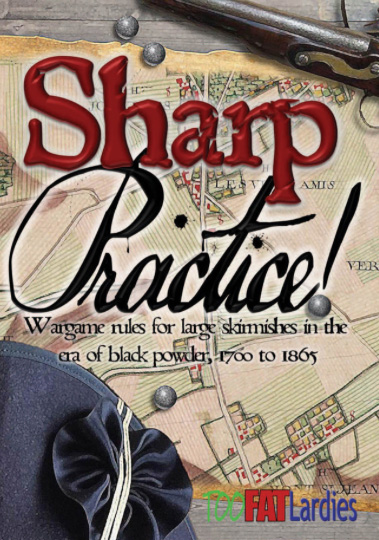

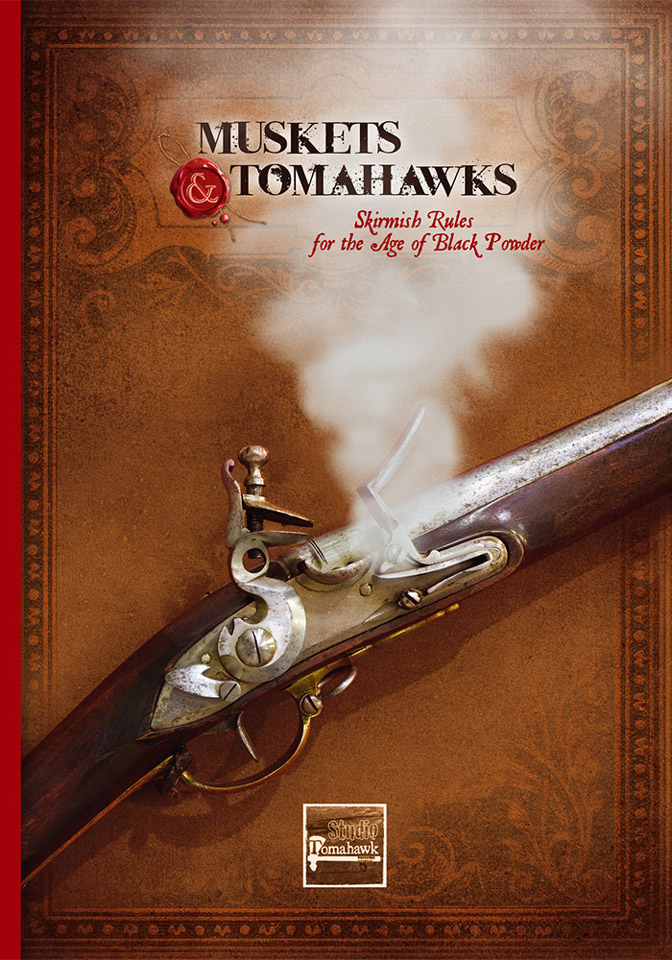

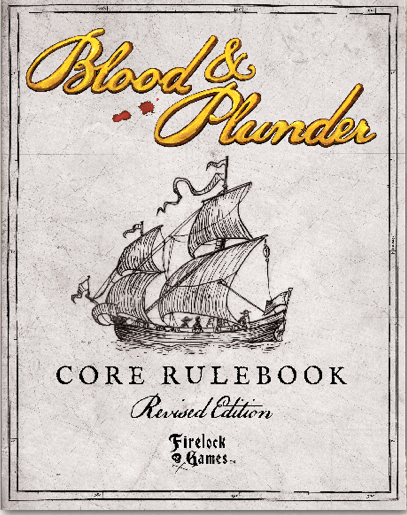

Muskets and Tomahawks
Skirmish warfare in the woods, where you can lurk in ambush on unsuspecting redcoats
Muskets and Tomahawks, offers an engaging experience that transports players to the turbulent era of the French and Indian Wars. The last of the Mohicans and friends. Developed by Studio Tomahawk, this rule set has gained popularity for its unique blend of historical accuracy, strategic depth, and fast-paced gameplay and ideal for a force of around 40 to 100 figures.
Attention to detail
One of the standout features of Muskets and Tomahawks is their meticulous attention to historical detail. The ruleset captures the essence of 18th-century colonial conflicts, seamlessly blending the tactics and technologies of the time. From the crackling musket fire to the swift strikes of tomahawks, players are treated to a vivid and authentic portrayal of skirmishes during this tumultuous period.
The mechanics of the game strike a balance between simplicity and depth, making it accessible to newcomers while providing seasoned wargamers with strategic depth. The activation system, like so many other skirmish wargames these days is based on cards, but the system does introduce an element of unpredictability, keeping players on their toes and reflecting the chaotic nature of battle. The rules also incorporate various troop types, each with its own strengths and weaknesses, adding layers of tactical decision-making to the gameplay.
Scenario-based gameplay
This is a notable highlight, offering a variety of missions that go beyond the standard "kill or be killed" dynamic. Players will find themselves embroiled in diverse objectives, such as capturing strategic points, escorting important figures, or even negotiating with indigenous forces. This adds a narrative dimension to the battles, enhancing the overall gaming experience. For me narratives are an important ingredient in skirmish wargaming. It’s very much like a watching a Hollywood movie unfold.
Plenty of examples of play
The rulebook itself deserves praise for its clarity and organisation. Studio Tomahawk has presented the rules in a user-friendly manner, making it easy for players to reference and understand. The inclusion of examples and illustrations further aids comprehension, ensuring a smoother learning curve for both beginners and experienced players. Oh, and there are lots of pretty pictures to sweeten the eye—a must for any rulebook these days.
Furthermore, Muskets and Tomahawks encourages creativity and customisation. The rule set provides a solid framework for players to create their own scenarios, factions, and campaigns, allowing for endless possibilities and replayability.
A familiar card driven game
While the game excels in many aspects, some players may find that the reliance on cards for activations introduces an element of luck that could potentially swing the tide of battle. However, this element of chance adds a realistic touch to the chaos as players adapt to the unpredictable flow of the game. That’s life after all. Competition gamers need not apply.
In conclusion
Muskets and Tomahawks stands out as a captivating and well-crafted skirmish wargame. Whether you are a history enthusiast or a seasoned tabletop gamer, the ruleset provides an enjoyable and immersive experience that faithfully captures the essence of colonial warfare. With its blend of historical accuracy, engaging gameplay, and flexibility, Muskets and Tomahawks deserves a place on the shelf of any wargaming aficionado.
I should add, that there are two supplements to the rules, Muskets and Redcoats, which expands the era into the American War of Independence and the other is Shakoes and Bayonets which takes us into the Napoleonic Wars.
Printer friendly cards, FAQs, Ref Sheets, Tokens and Hidden movement markers are all available from Studio Tomahawk.
Blood and Plunder
Skirmish buckleswashing for bearded seafarers and rogues everywhere
Blood and Plunder is a historical tabletop wargame that immerses players in the swashbuckling world of 17th-century piracy and colonial warfare. Developed by Mike Tunez and Firelock Games, this ruleset combines land and sea battles, providing a unique and comprehensive gaming experience.
Mechanics:
Activation and Turn Order: The game employs a turn sequence based on a deck of Activation Cards, representing the chaos of battle. Players draw cards for activation, determining the order in which units, leaders, and ships can take actions. This introduces an unpredictable and dynamic element to the game.
Skirmish and Sea Rules: Blood and Plunder seamlessly integrates land skirmish and naval rules, allowing players to transition between ship-to-ship combat and intense skirmishes on land. The system captures the essence of piracy and colonial conflicts during the Golden Age of Piracy.
Activation Dice: Units are activated by rolling a set number of D10 activation dice, determined by their leadership value. This provides variability in the effectiveness of units, simulating the uncertainty of command and the chaos of battle.
Specialist Actions: Each unit has a variety of actions available, such as movement, shooting, and special abilities unique to their type. The rules accommodate different types of troops, from disciplined European soldiers to agile and cunning Caribbean natives.
Morale and Fatigue: The game incorporates a morale system that reflects the ebb and flow of battle. As units take casualties or face challenging situations, their morale is tested. Fatigue also accumulates during the game, affecting a unit's performance.
Its strengths
Blood and Plunder stands out for its seamless integration of land and sea rules, allowing for epic scenarios that span both environments. The activation system, with its use of cards and dice, creates a fluid and engaging turn sequence. The attention to historical detail in terms of unit types and abilities contributes to the experience.
The dual nature of land and sea battles might make the game seem overwhelming for newcomers, particularly those not familiar with both elements. Some players may find the learning curve steeper than other skirmish wargames, but heck, they are fun.
A blend of land and sea
As a historical wargamer, I appreciate Blood and Plunder for its ambitious scope, successfully blending land and sea battles in a historical setting. The activation system adds an exciting level of unpredictability, and the game captures the swashbuckling atmosphere of the 17th century.
In conclusion, Blood and Plunder offers a thrilling and immersive experience for those seeking a comprehensive historical wargame covering both land and sea conflicts. Its strengths lie in its ambitious design, attention to historical detail, and dynamic gameplay. While the learning curve might be steep for beginners, the game rewards players with a rich and engaging tabletop experience. What more can you ask? You can get hold of a PDF copy of the rules at Firelock Games .